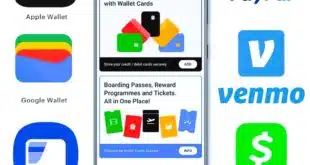Businesses are increasingly looking for software developers that can integrate payments and other traditional banking products and services and generate new revenue for the platforms that offer them, according to a recent report from The Strawhecker Group (TSG) and KeyBank.
The trend, known as embedded banking, is a way for businesses to be a one-stop shop when it comes financial services such as loans, checking and savings accounts, and payments that can be accessed in-app. If done correctly, the report says, embedded banking can be highly lucrative to a software vendor’s core offering.
TSG defines embedded banking as the integration of traditional banking services into the software offerings of non-financial companies. For merchant acquirers, this can include embedded or integrated payments.

Of the more than 200 software vendors TSG surveyed, 33% reported high demand from their merchant customers for embedded-banking services, while 54% reported some demand. Some 91% of software vendors that offered some type of embedded-banking solution agreed it was important or extremely important to their company today.
Vertical markets where demand for embedded banking is strong include the childcare, hospitality, pharmacy, property-management, restaurant, and veterinary industries. By some estimates, according to the report, embedded financial services will become a $230-billion business in 2025.
In addition, 24% of software vendors surveyed that did not have embedded-banking capabilities reported the technology was on their roadmap. TSG conducted the survey over a more than two-week period last October.
A key driver behind the growing demand from businesses is that embedded banking services can offer a point of differentiation. “It can provide them an edge, especially since every business doesn’t offer them,” says Sheridan Trent, director of market intelligence at TSG. “Embedded-banking services enhance the customer experience.”
Examples of embedded-banking services business can offer their customers include product insurance, installment plans, virtual account management that enables payouts, bill payment, and invoicing, all within a single app.
“Consumers are getting more comfortable paying for their food within delivery apps or enrolling in installment plans from the retailer through which they buy a product—the convenience afforded through these options provides a better value proposition,” the report says.
While about a third of software vendors surveyed report strong demand for embedded banking, 28% said they were not familiar with it. This trend is not necessarily due to lack of awareness of the technology, but could be explained by varying definitions of embedded banking.
“A lot of software vendors are niche-focused, so they may not have considered embedded banking yet in terms of their own offering, or may know of it by another name,” says Trent. “But with 91% of vendors that offer embedded banking agreeing that it’s important to their business, embedded banking is clearly becoming a value-added proposition.”




